The 2020 Mac Mini Unleashed: Putting Apple Silicon M1 To The Test
by Andrei Frumusanu on November 17, 2020 9:00 AM ESTBenchmarks: Whatever Is Available
As we’ve had very little time with the Mac mini, and the fact that this not only is a macOS system, but a new Arm64-based macOS system, our usual benchmark choices that we tend to use aren’t really available to us. We’ve made due with a assortment of available tests at the time of the launch to give us a rough idea of the performance:

One particular benchmark that sees the first light of day on macOS as well as Apple Silicon is Cinebench. In this first-time view of the popular Cinema4D based benchmark, we see the Apple M1 toe-to-toe with the best-performing x86 CPUs on the market, vastly outperforming past Apple iterations of Intel silicon. The M1 here loses out to Zen3 and Tiger Lake CPUs, which still seem to have an advantage, although we’re not sure of the microarchitectural characteristics of the new benchmark.
What’s notable is the performance of the Rosetta2 run of the benchmark when in x86 mode, which is not only able to keep up with past Mac iterations but still also beat them.
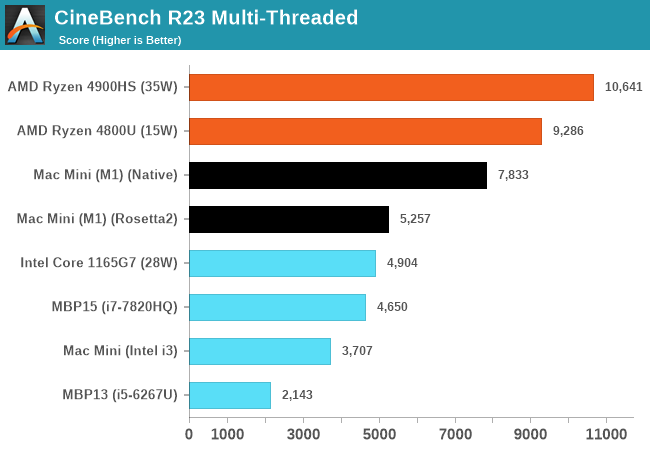
In the multi-threaded R23 runs, the M1 absolutely dominates past Macs with similar low-power CPUs. Just as of note, we’re trying to gather more data on other systems as we have access to them, and expand the graph in further updates of the article past publishing.
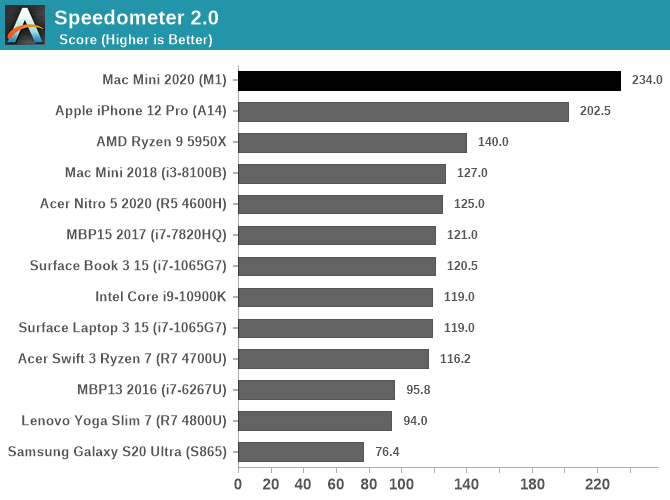
In browser-benchmarks we’ve known Apple’s CPUs to very much dominate across the landscape, but there were doubts as to whether this was due to the CPUs themselves in the iPhone or rather just the browsers and browser engines. Now running on macOS and desktop Safari, being able to compare data to other Intel Mac systems, we can come to the conclusion that the performance advantage is due to Apple’s CPU designs.
Web-browsing performance seems to be an extremely high priority for Apple’s CPU, and this makes sense as it’s the killer workload for mobile SoCs and the workload that one uses the most in everyday life.
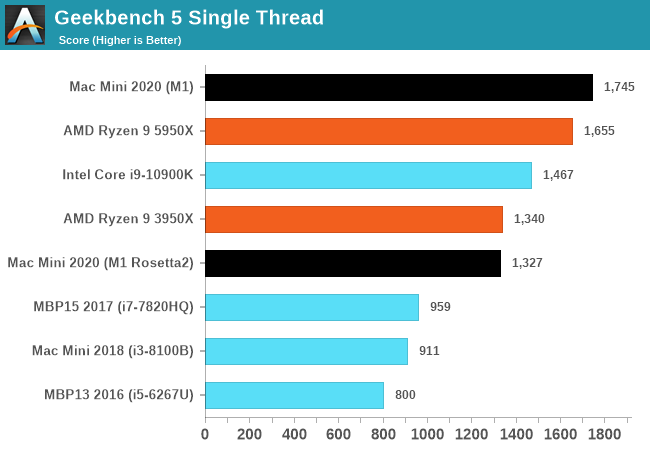
In Geekbench 5, the M1 does again extremely well as it actually takes the lead in our performance figures. Even when running in x86 compatibility mode, the M1 is able to match the top single-threaded performance of last generation’s high-end CPUs, and vastly exceed that of past iterations of the Mac mini and past Macbooks.
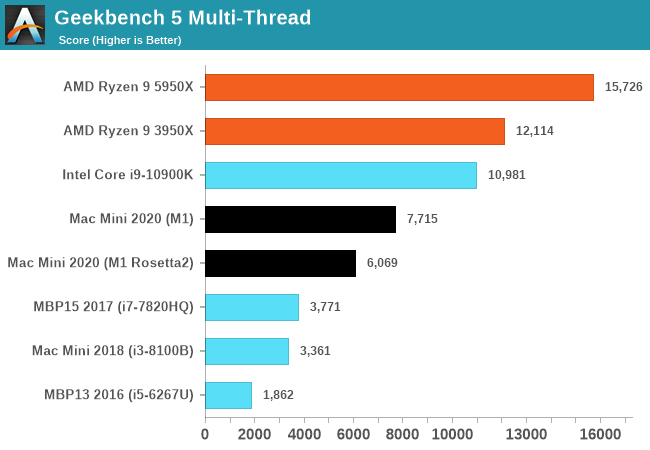
Multi-threaded performance is a matter of core-count and power efficiency of a design. The M1 here demolishes a 2017 15-inch Macbook Pro with an Intel i7-7820HQ with 4 cores and 8 threads, posting over double the score. We’ll be adding more data-points as we collect them.


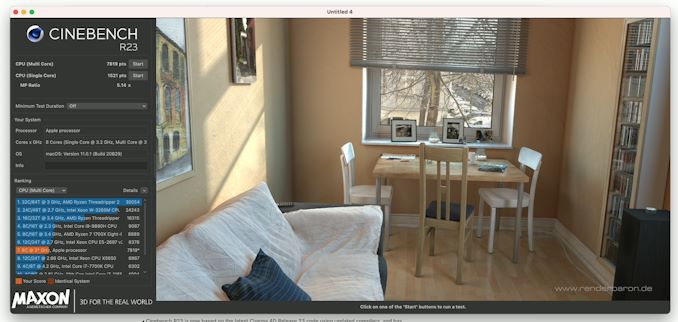








682 Comments
View All Comments
Hrunga_Zmuda - Wednesday, November 18, 2020 - link
You clearly are not a real Apple developer, you are a Windows developer forced to violate your prejudice. There are plenty of top-flight developers who love to develop for MacOS.Spunjji - Thursday, November 19, 2020 - link
Most of the devs I know like macOS as a development platform *and* as a target, and none of them are Apple fans outside of that. I guess it varies.allajunaki - Tuesday, November 17, 2020 - link
On the contrary, one of the first thing they showcased in the initial demos were running virtualization and Linux.andreltrn - Tuesday, November 17, 2020 - link
Yes for for web developers that is important. Most web app run on linux not windows. I recruit developers for the IT industries and most of the server apps are developed for Linux servers.toke - Tuesday, November 17, 2020 - link
It would have been so nice to compare this to mini 2018 i7 (I7-8700B + uhd630),meh...
Ryan Smith - Tuesday, November 17, 2020 - link
There are about half a dozen further Macs I would have liked to include. Unfortunately securing them is easier said than done, especially in the middle of a pandemic. So we had to take what we could get.The i7 would certainly have performed better than the i3 on the CPU side thanks to the additional cores and added frequency. The GPU side would have been almost as dire, however. Apple really wants to move the baseline for their systems far beyond what Intel (and really, the other PC OEMs) deem acceptable.
DeathArrow - Tuesday, November 17, 2020 - link
Does it run Crysis?Ryan Smith - Tuesday, November 17, 2020 - link
Sadly, no. There never was a Crysis port for the Mac. In fact without Bootcamp, it's even less capable of running Crysis than the 2018 Mini.Silver5urfer - Tuesday, November 17, 2020 - link
Ask about SOTTR, yeah it exists on Mac OS and with proper port. But it won't be able to run as there are GPU requirements in play which Apple can never match, due to VRAM plus the Rosetta2 layer so the dev Feral should update it. So unless they do that there's no gaming benches which are big ones not the garbage Apple arcade mobile ones.tipoo - Tuesday, November 17, 2020 - link
I believe Apple had mentioned 128 ALUs per GPU core at the keynote around the same time they mentioned the flops, so that's confirmed.Worth keeping in mind, this is the slowest M chip Apple will ever ship, the very baseline, and it's already doing this. Can't wait for the "ARM can't scale" x86 die hards to pretend they never said such things.